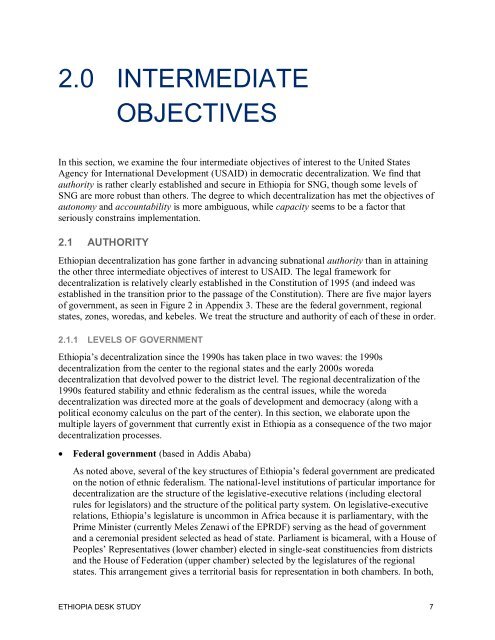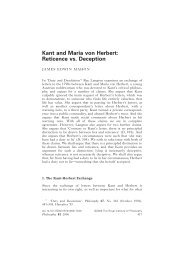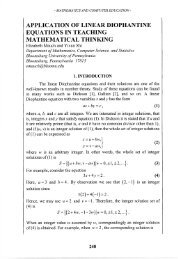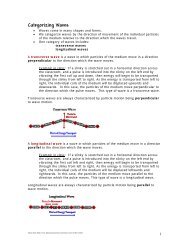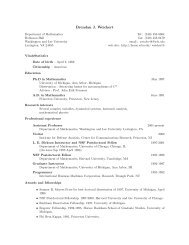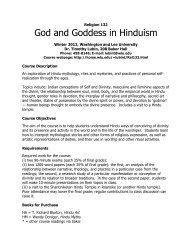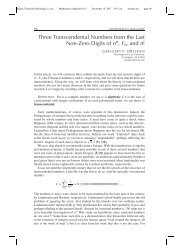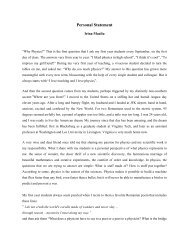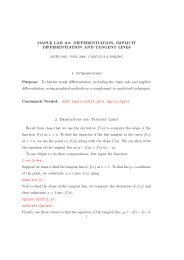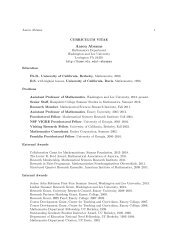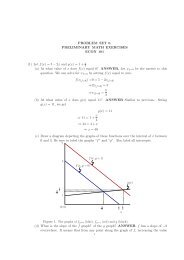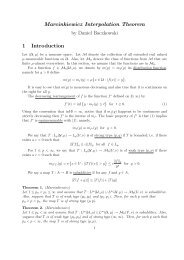comparative assessment of decentralization in africa: ethiopia desk ...
comparative assessment of decentralization in africa: ethiopia desk ...
comparative assessment of decentralization in africa: ethiopia desk ...
- No tags were found...
You also want an ePaper? Increase the reach of your titles
YUMPU automatically turns print PDFs into web optimized ePapers that Google loves.
2.0 INTERMEDIATEOBJECTIVESIn this section, we exam<strong>in</strong>e the four <strong>in</strong>termediate objectives <strong>of</strong> <strong>in</strong>terest to the United StatesAgency for International Development (USAID) <strong>in</strong> democratic <strong>decentralization</strong>. We f<strong>in</strong>d thatauthority is rather clearly established and secure <strong>in</strong> Ethiopia for SNG, though some levels <strong>of</strong>SNG are more robust than others. The degree to which <strong>decentralization</strong> has met the objectives <strong>of</strong>autonomy and accountability is more ambiguous, while capacity seems to be a factor thatseriously constra<strong>in</strong>s implementation.2.1 AUTHORITYEthiopian <strong>decentralization</strong> has gone farther <strong>in</strong> advanc<strong>in</strong>g subnational authority than <strong>in</strong> atta<strong>in</strong><strong>in</strong>gthe other three <strong>in</strong>termediate objectives <strong>of</strong> <strong>in</strong>terest to USAID. The legal framework for<strong>decentralization</strong> is relatively clearly established <strong>in</strong> the Constitution <strong>of</strong> 1995 (and <strong>in</strong>deed wasestablished <strong>in</strong> the transition prior to the passage <strong>of</strong> the Constitution). There are five major layers<strong>of</strong> government, as seen <strong>in</strong> Figure 2 <strong>in</strong> Appendix 3. These are the federal government, regionalstates, zones, woredas, and kebeles. We treat the structure and authority <strong>of</strong> each <strong>of</strong> these <strong>in</strong> order.2.1.1 LEVELS OF GOVERNMENTEthiopia’s <strong>decentralization</strong> s<strong>in</strong>ce the 1990s has taken place <strong>in</strong> two waves: the 1990s<strong>decentralization</strong> from the center to the regional states and the early 2000s woreda<strong>decentralization</strong> that devolved power to the district level. The regional <strong>decentralization</strong> <strong>of</strong> the1990s featured stability and ethnic federalism as the central issues, while the woreda<strong>decentralization</strong> was directed more at the goals <strong>of</strong> development and democracy (along with apolitical economy calculus on the part <strong>of</strong> the center). In this section, we elaborate upon themultiple layers <strong>of</strong> government that currently exist <strong>in</strong> Ethiopia as a consequence <strong>of</strong> the two major<strong>decentralization</strong> processes.Federal government (based <strong>in</strong> Addis Ababa)As noted above, several <strong>of</strong> the key structures <strong>of</strong> Ethiopia’s federal government are predicatedon the notion <strong>of</strong> ethnic federalism. The national-level <strong>in</strong>stitutions <strong>of</strong> particular importance for<strong>decentralization</strong> are the structure <strong>of</strong> the legislative-executive relations (<strong>in</strong>clud<strong>in</strong>g electoralrules for legislators) and the structure <strong>of</strong> the political party system. On legislative-executiverelations, Ethiopia’s legislature is uncommon <strong>in</strong> Africa because it is parliamentary, with thePrime M<strong>in</strong>ister (currently Meles Zenawi <strong>of</strong> the EPRDF) serv<strong>in</strong>g as the head <strong>of</strong> governmentand a ceremonial president selected as head <strong>of</strong> state. Parliament is bicameral, with a House <strong>of</strong>Peoples’ Representatives (lower chamber) elected <strong>in</strong> s<strong>in</strong>gle-seat constituencies from districtsand the House <strong>of</strong> Federation (upper chamber) selected by the legislatures <strong>of</strong> the regionalstates. This arrangement gives a territorial basis for representation <strong>in</strong> both chambers. In both,ETHIOPIA DESK STUDY 7


